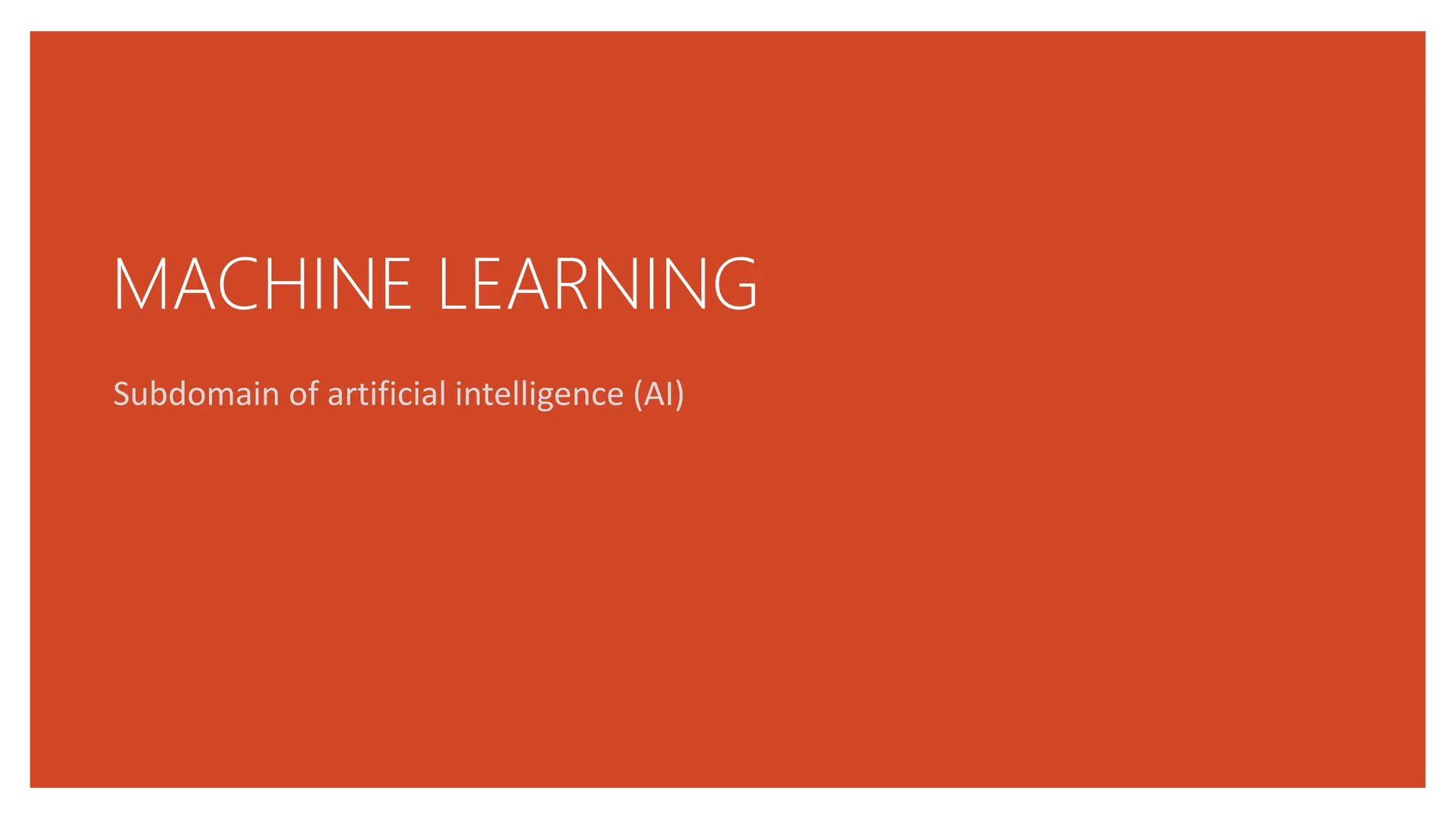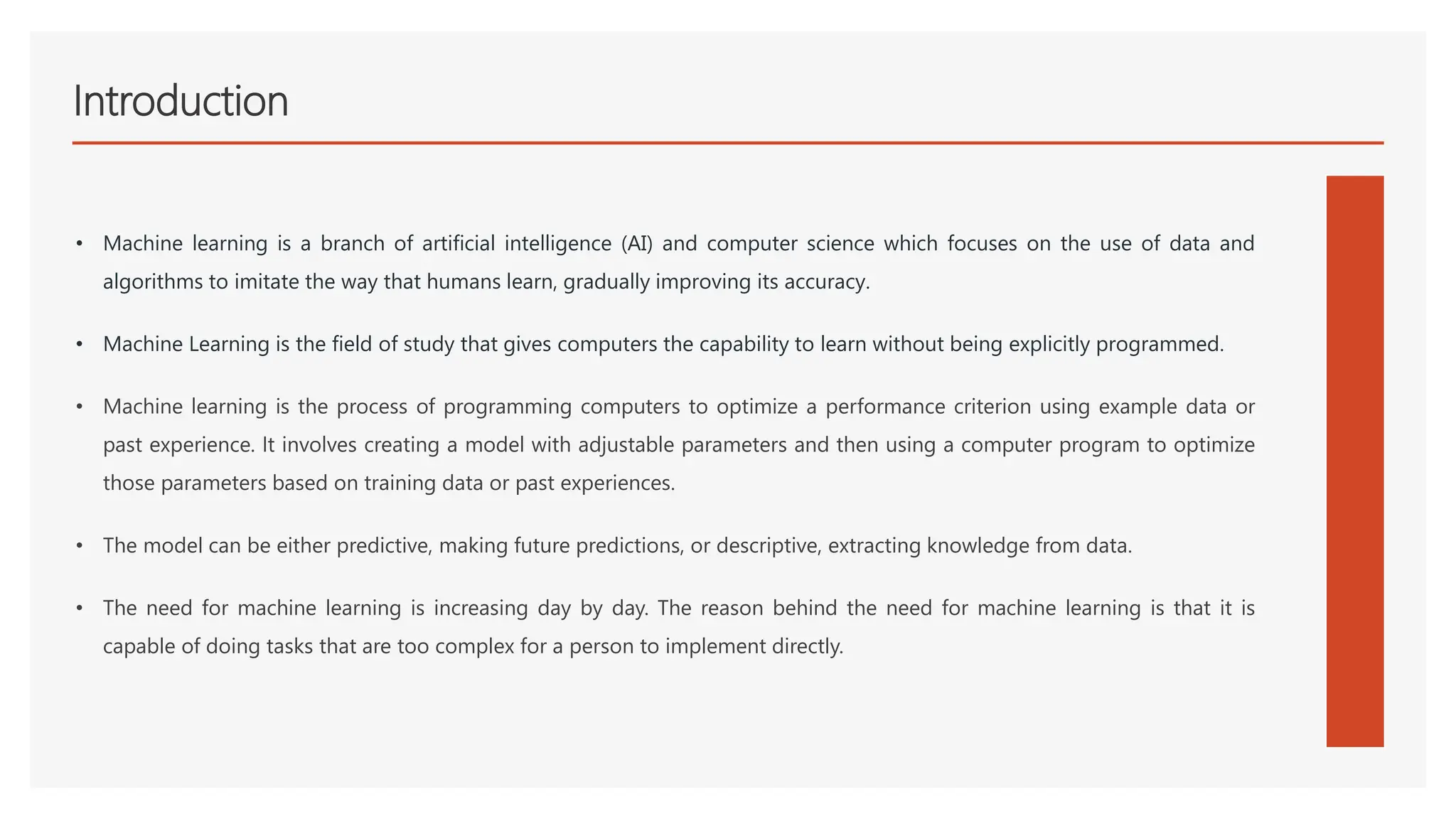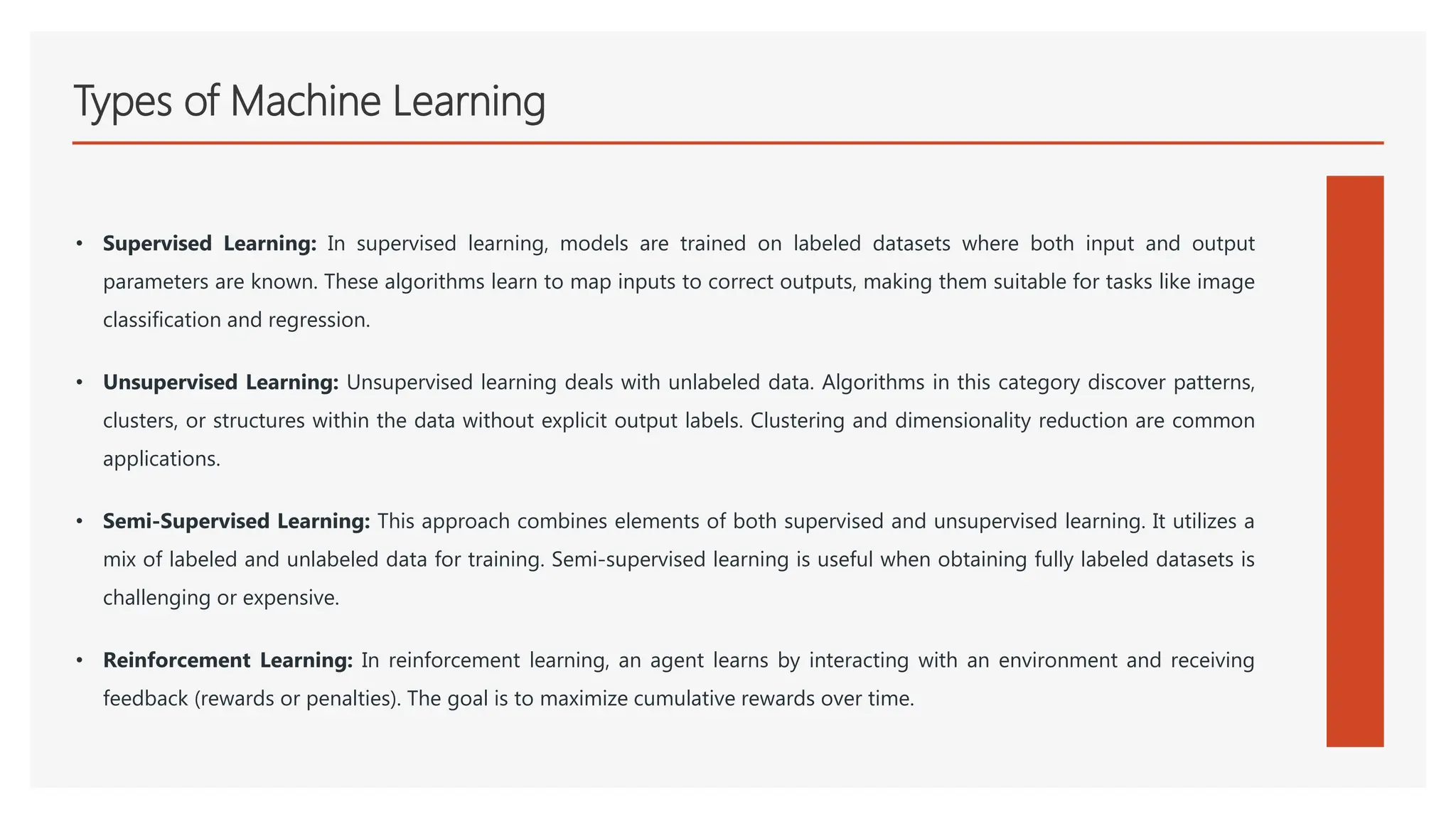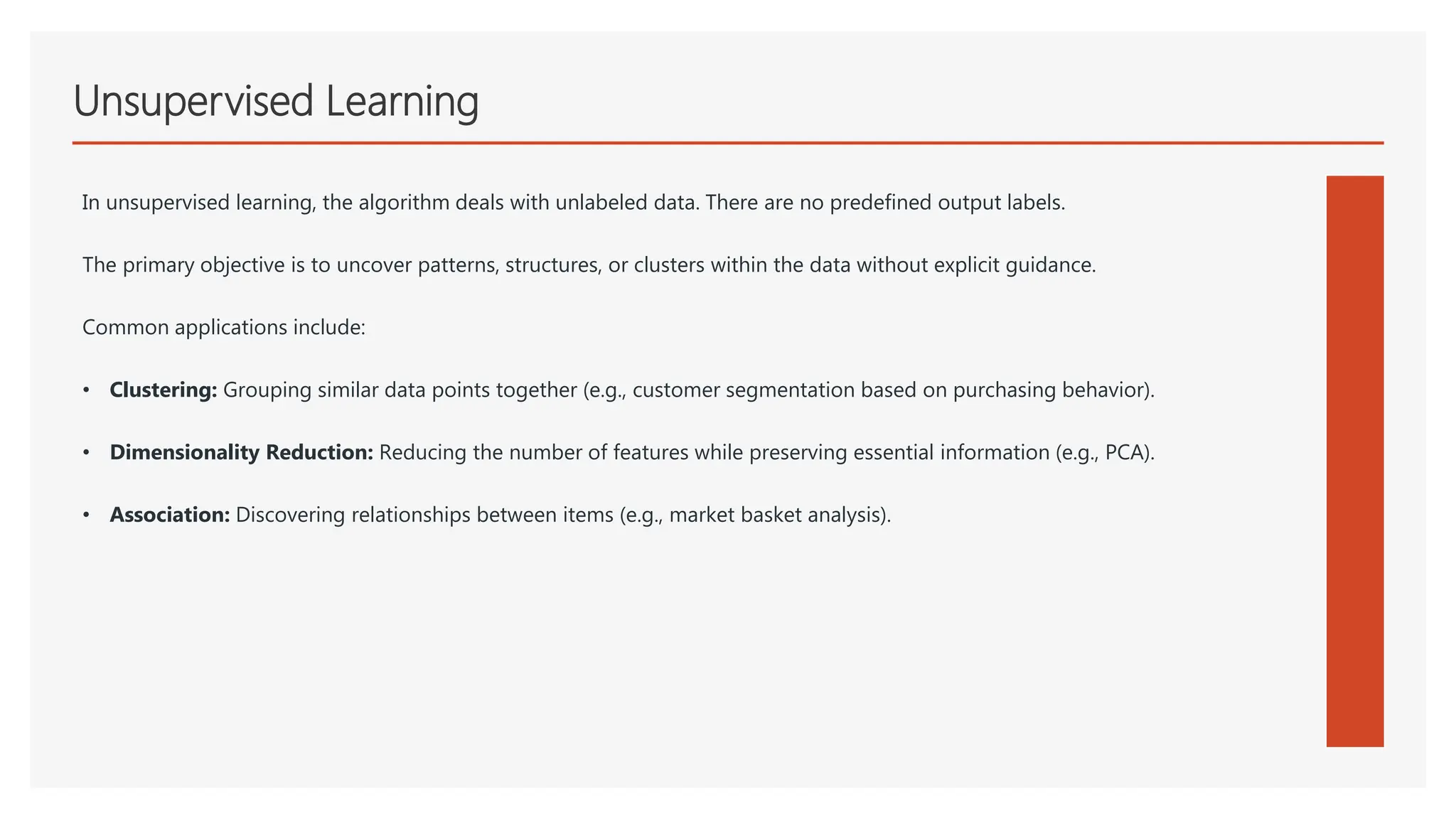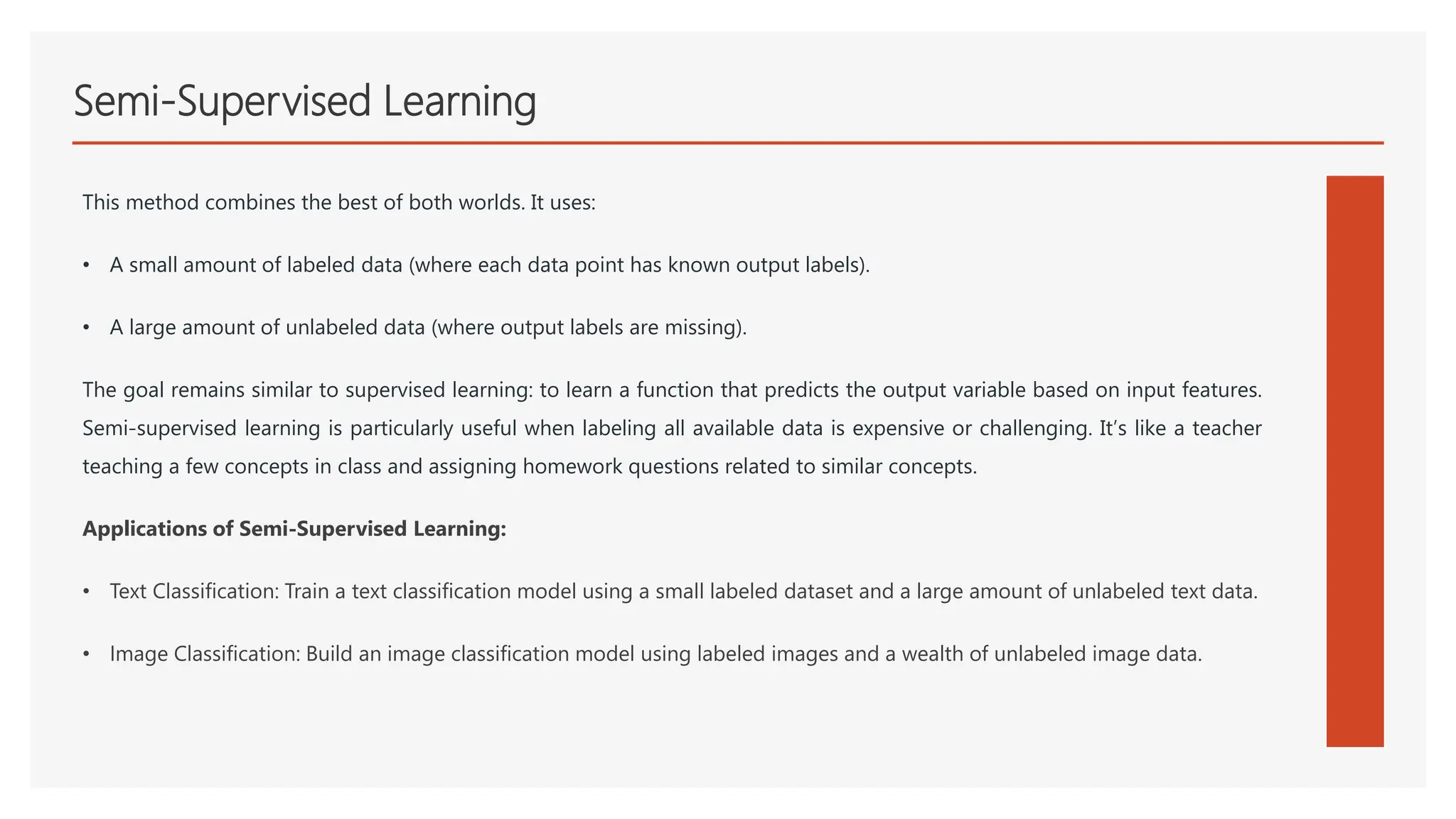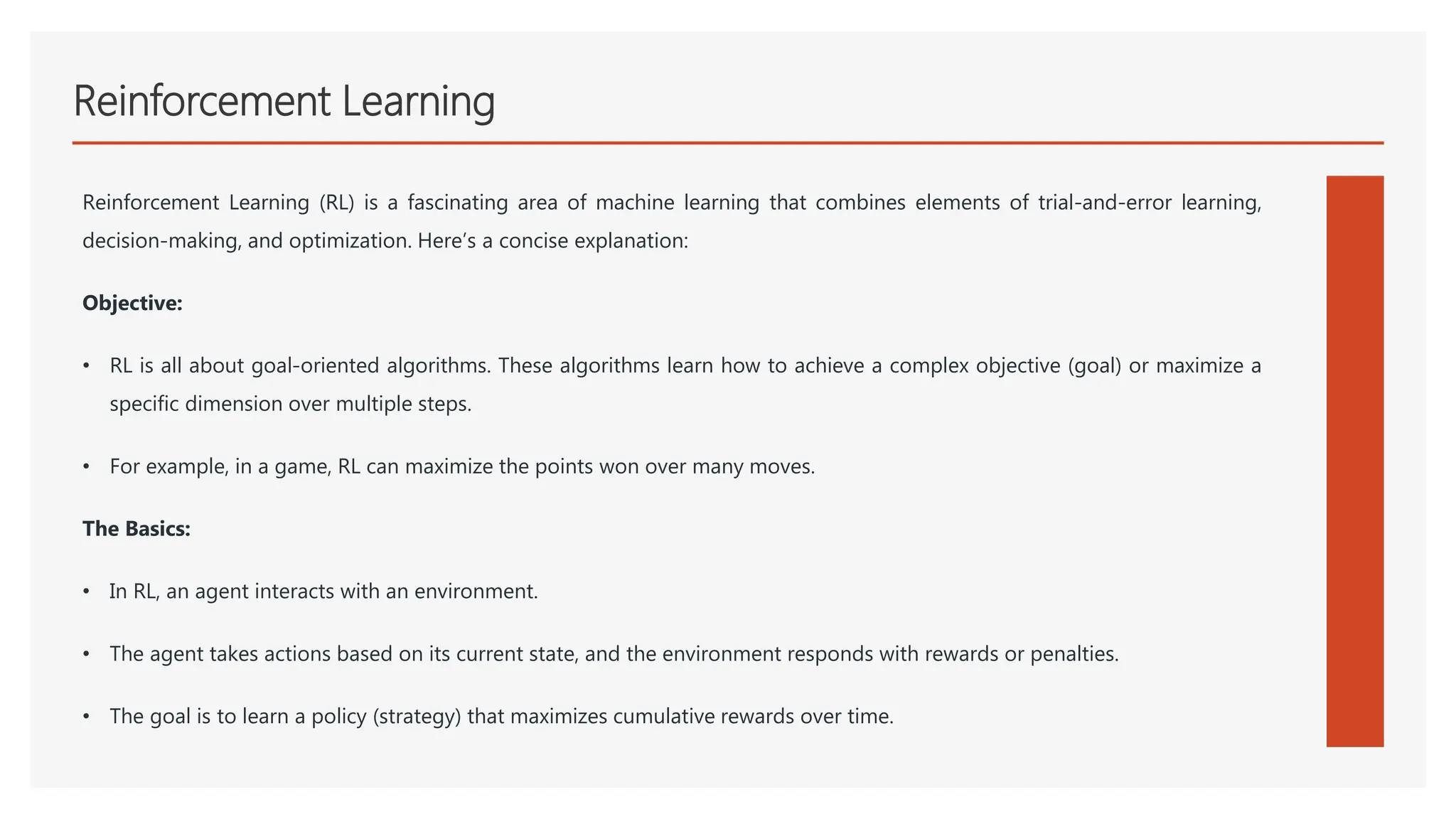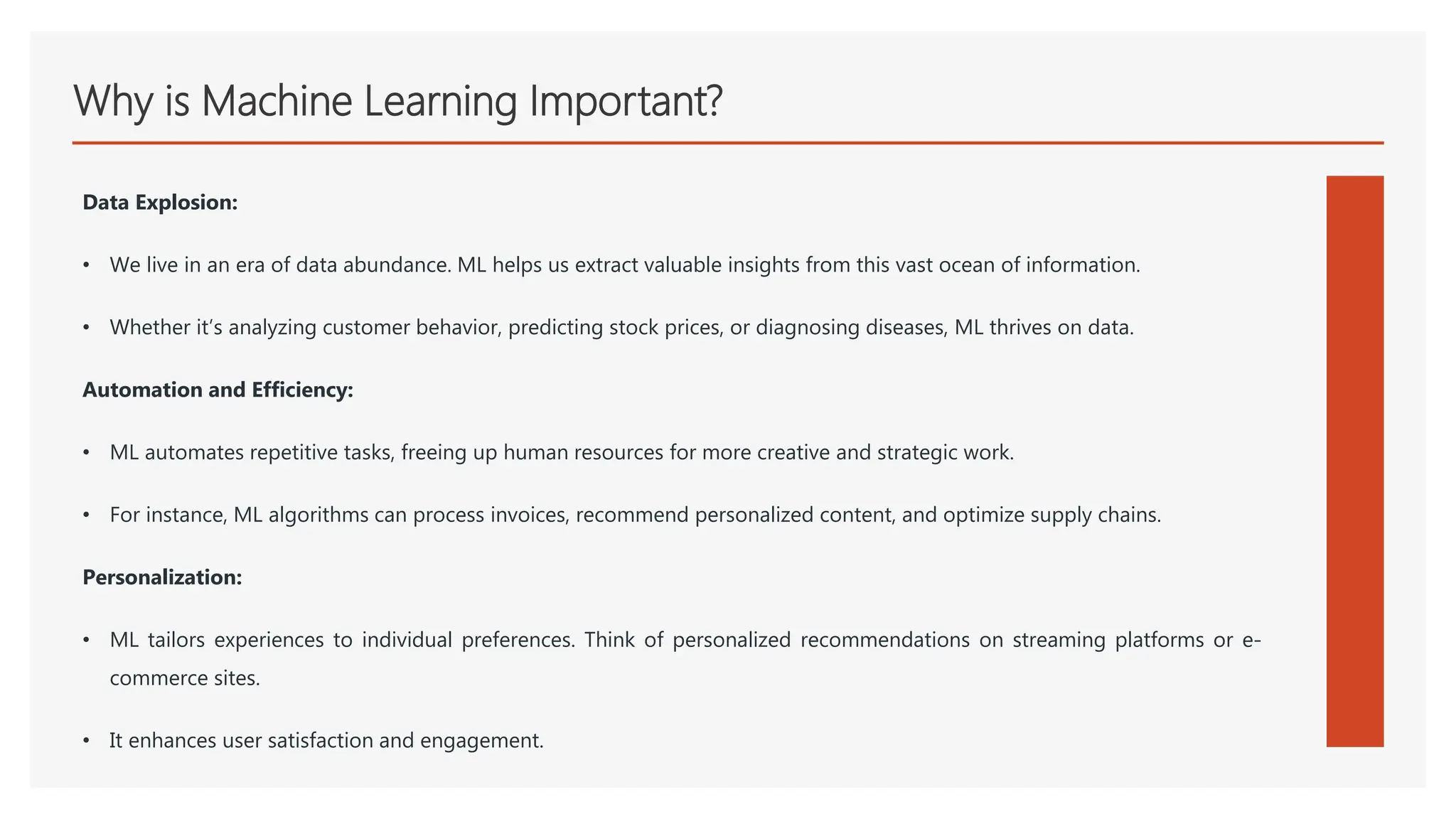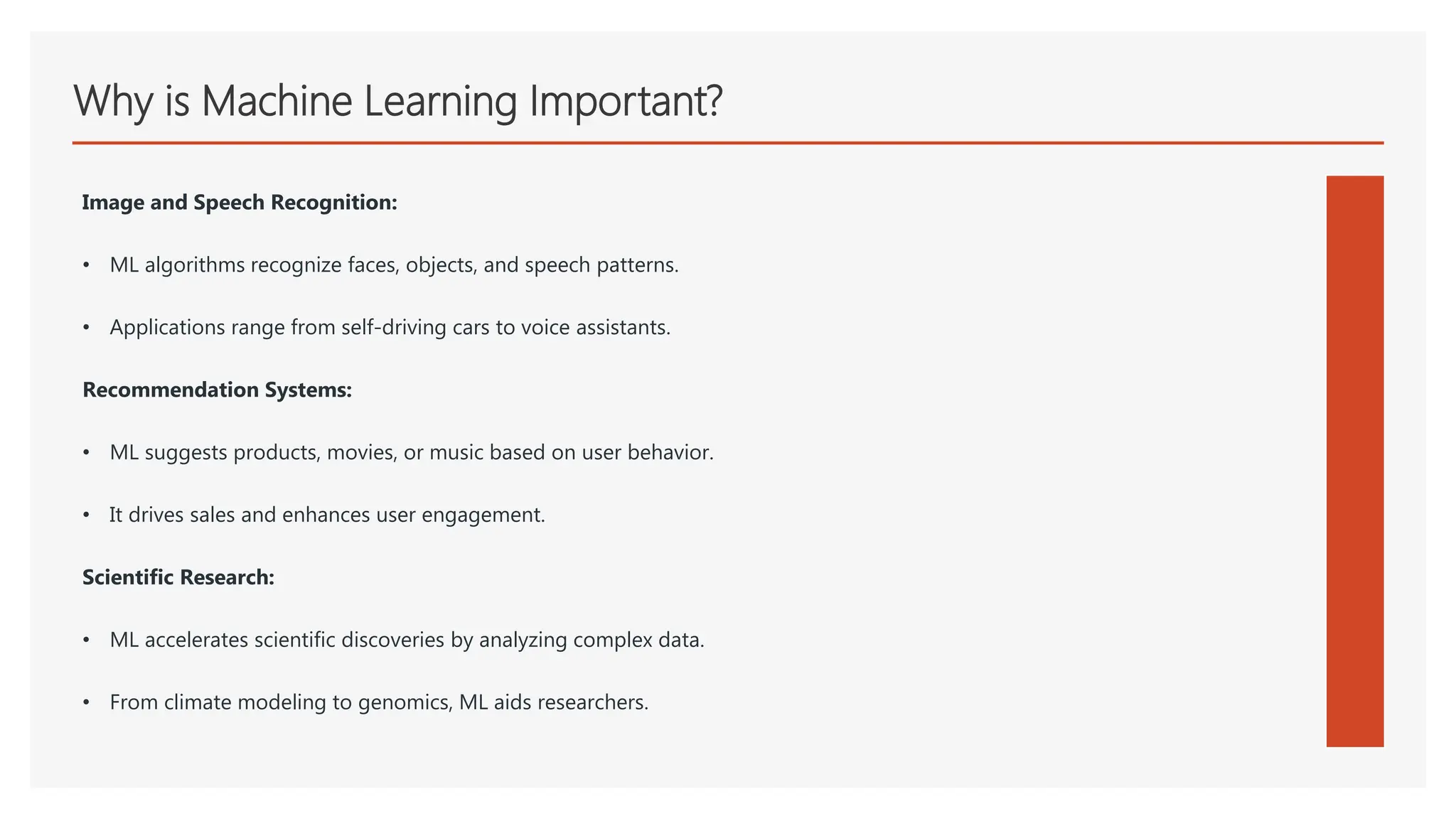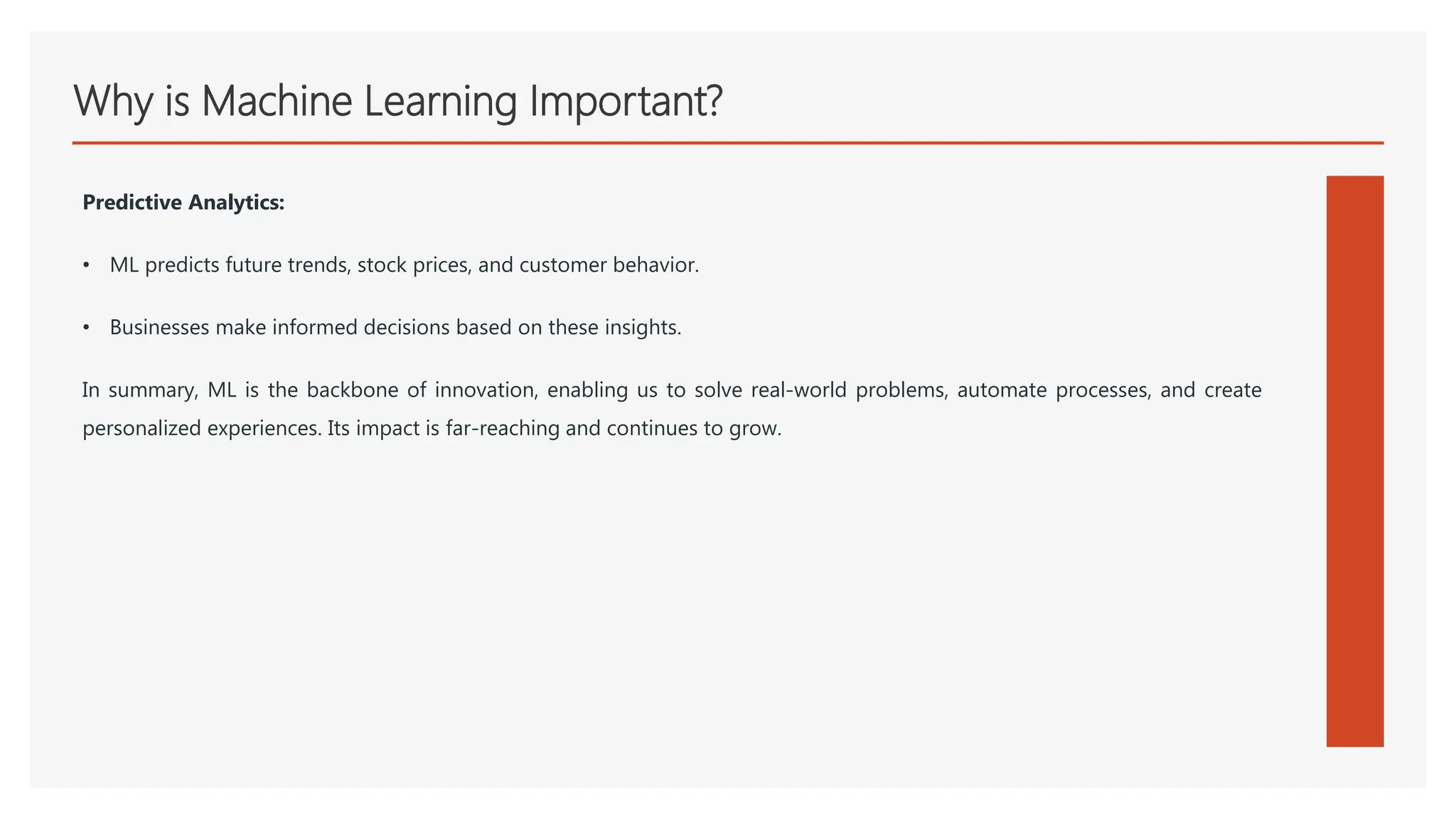Machine learning is a branch of artificial intelligence that uses data and algorithms to enable computers to learn and improve at tasks without being explicitly programmed. There are three main types of machine learning: supervised learning which uses labeled training data, unsupervised learning which finds patterns in unlabeled data, and reinforcement learning where an agent learns from trial-and-error interactions with an environment. Machine learning is important because it allows automation through data-driven pattern recognition, enables personalization at scale, and accelerates scientific discovery through analysis of massive and complex datasets.
